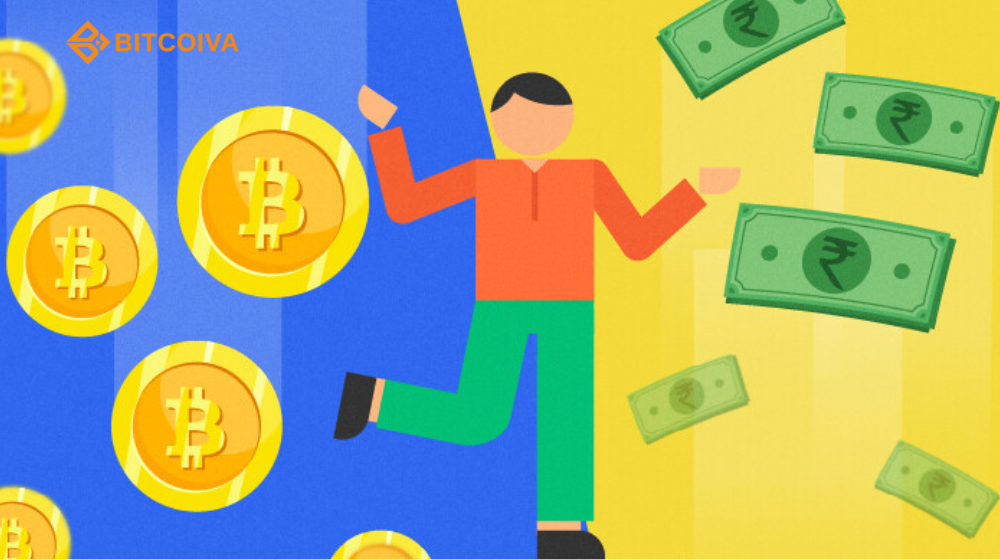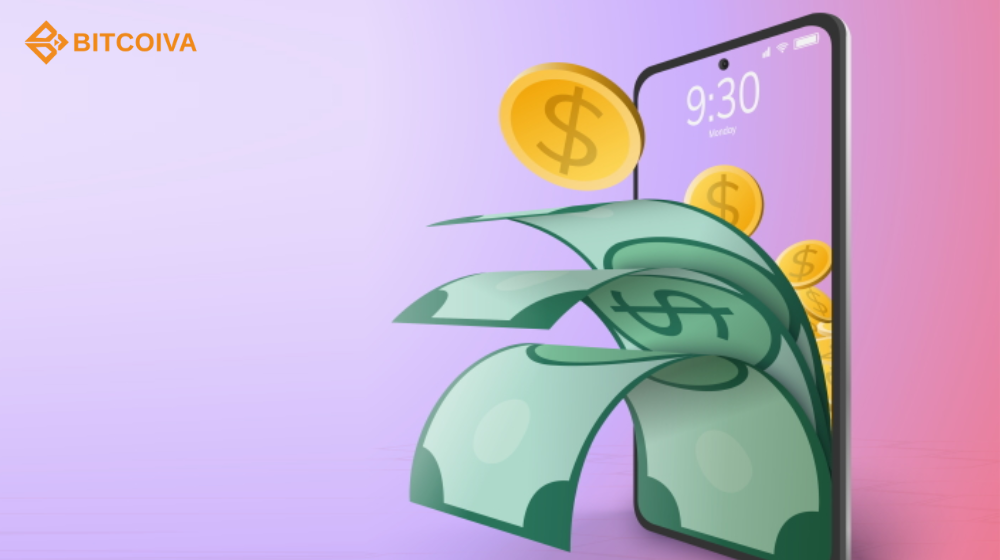The primary objective while investing your money in the cryptocurrency buy in India market would be to see growth in your net worth. Investing in multiple investment niches and types is an approach to diversifying your portfolio. Ideally, you’ll be able to sleep soundly at night, knowing that your investment decisions generate additional income for you. Design your portfolio to create passive income and let your money work for you.
However, getting a passive income source in an uncertain economy might be challenging. Due to the wide swings that can develop in any investment, you must select a reliable source of income. To build a successful passive income strategy, you should first define what it means to be passively wealthy.
Passive income is money earned by your investments without your intervention. It may include income from a rental property, automated sales for a business, dividends from stock investments, or any other kind of income. Another form of passive income is the interest you get on your bank deposits and, more lately, your cryptocurrency assets. Any investment that earns money on its own is assumed passive.
Years back, the only way to profit from digital assets was to buy low and sell high, but that is no longer the case. Several best crypto trading platform India now even pay interest on your cryptocurrency holdings, and that is only the tip of the iceberg. The best thing is that you don’t have to sell anything to grow your assets. All of this is made possible by the constantly innovating crypto sector.
How to generate Passive Income with your Crypto holdings?
The cryptocurrency industry is a land of opportunities for everyone, especially millennials. The eighties and nineties generation might have missed the opportunity to invest in last-generation innovations like Google and Facebook – Now, we have an even bigger opportunity ahead of us. The blockchain realm has made investing a lot easier, simpler, and more inclusive. Here are some of the most popular crypto industry services to generate substantial passive income.
Staking
Blockchains are transaction databases that are managed by no single authority. Proof of work (PoW) blockchains, such as Bitcoin, rely on mining to address the challenge of securely verifying transactions. Mining uses powerful computers vying to solve cryptographic problems. However, mining involves costly hardware and significant power consumption to reach out to the population.
Proof of stake networks like Polkadot, Cardano, and Ethereum 2.0 replace it with a staking mechanism. It is the safest and easiest way, and it is profitable for both new and experienced traders alike.
Like miners earn crypto for their labor (all that are gas-guzzling computation), validators get crypto when they stake crypto. Every staker that delegates crypto to the validator obtains a share of the payouts.
As a result, staking may be a financially appealing alternative for crypto investors who want to hold assets rather than day trade them, no matter how tiny they may be. While staking is based on sophisticated mathematics, it requires minimal technical understanding.
Yield rates differ between platforms and might alter based on the number of validators in the network.
There are two methods of staking.
The first option is to act as a validator, operating your own node. This method needs some bootstrapping. To host your own validator node, you must have a secure and dependable technological infrastructure and the required knowledge.
But, more typically, staking is performed by delegation—you delegate your coins to a validator with the necessary setup. Validators will undertake the grunt work of running a node for you in return for a cut of your staking earnings. Simple as that!
There is now an entire business called staking-as-a-service that has evolved (SaaS). Some of the biggest SaaS providers are:
Staked
Figment Network
MyContainer
Stake Capital
Stake.Fish
Certain staking systems allow you to withdraw if you don’t like the concept of your rewards compounding.
Another option is staking via cryptocurrency exchange India like Bitcoiva. Most cryptocurrency exchanges in India run validators, which enable clients to stake with them via the exchange’s user interface.
Staking on exchanges is frequently comparable. However, the staking options of different crypto exchange India vary regarding which cryptocurrencies are accessible for staking, their fees, and the locking time (if any).
Some exchanges have to stake on their main menu, making it easier to locate. Others, such as Binance, will feature it under “Generate,” which includes other methods to earn passive income from cryptocurrency buy in India, such as lending.
Mining
Mining is deploying computer resources to secure a network in exchange for a reward. It is one of the oldest ways of generating passive income in the cryptocurrency industry, even though it does not need cryptocurrency holdings.
In the early days of Bitcoin, mining with a normal Central Processing Unit (CPU) was a possible alternative. As the system hash rate rose, most miners upgraded to more powerful Graphics Processing Units. As the competition intensified, it became almost a game of Application-Specific Integrated Circuits devices that use mining chips explicitly built for this purpose.
Lending
Lending allows you to earn interest on your cryptocurrency assets. Many peer-to-peer (P2P) lending services will enable you to lock your funds for a specific period in exchange for interest payments later. The interest rate might be fixed (which is set by the platform) or variable (determined by you depending on current market rates).
This option is natively available on the platforms of several crypto currency trading platform that allow margin trading. This strategy is appropriate for long-term investors who want to build their portfolios with minimum effort. It is crucial to note that protecting money in a smart contract is risky.
Running a Lightning Node
The lightning node is a second-layer protocol built on top of a network, such as the blockchain of Bitcoin. It is an off-chain payment system network used for fast and quick transactions that do not require immediate transmission to the underlying blockchain.
Most transactions on the Bitcoin network are one-way, which means that if Phoebe sends a bitcoin to John, John will not be able to send the same coin back to Phoebe via the same payment channel. The Lightning Network uses bidirectional channels that need prior agreement between the two parties on the terms of the transaction.
People that operate Lightning Network nodes can charge fees for processing transactions over their Lightning channels, earning small sums of BTC in the process.
Bottom Line
The number of possibilities to generate passive income in the blockchain industry is constantly expanding. Blockchain companies that provide generic mining services have executed some of these techniques. As cryptocurrencies become more reliable and secure, they may eventually represent a viable option for a steady source of income.
Visit us at: www.bitcoiva.com


